Infamous Queen Jezebel And Her Ancient Seal
A. Sutherland - AncientPages.com - In the 1960s, a fascinating ancient and large seal was discovered by the Old Testament scholar Dr. Marjo Korpel.
Scholars assumed that the seal belonged to the biblical figure, Queen Jezebel (Izebel), the Phoenician pagan wife of the Israelite King Ahab (9th century BC).
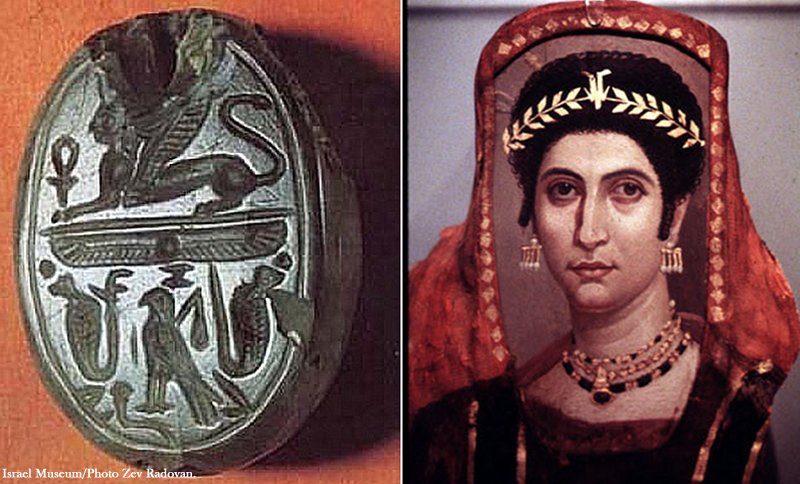 Four paleo-Hebrew letters—two just below the winged sun disk at center, two at bottom left and right—spell out the name YZBL, or Jezebel, on this seal. The Phoenician design, the dating of the seal to the ninth or early eighth century B.C.E. and, of course, the name, have led scholars to speculate that the Biblical queen may once have used this gray opal to seal her documen.
Four paleo-Hebrew letters—two just below the winged sun disk at center, two at bottom left and right—spell out the name YZBL, or Jezebel, on this seal. The Phoenician design, the dating of the seal to the ninth or early eighth century B.C.E. and, of course, the name, have led scholars to speculate that the Biblical queen may once have used this gray opal to seal her documen.
Four paleo-Hebrew letters—two just below the winged sun disk at the center, two at the bottom left and right—spell out the name YZBL, or Jezebel, on this seal.
The Phoenician design, dating the seal to the ninth or early eighth century B.C.E. and, of course, the name, have led scholars to speculate that the Biblical queen may once have used this gray opal to seal her documents.
Many say she indeed was an evil person. Jezebel's name has been used for thousands of years to describe cunning, ruthless,s and reprehensible women.
Some believe she symbolizes evil, and her name has also become synonymous with idolaters, prostitutes, and sorcerers. The Bible portrays Queen Jezebel as a woman who, in the background, exerted enormous influence, including on her husband (1 Kings 21:25).
She saw the opportunity to bend the country's affairs to her will by devious means, including using her husband's seal (1 Kings 21:8) to forge letters.
'...So she wrote letters in Ahab's name, placed his seal on them, and sent them to the elders and nobles who lived in Naboth's city with him.' 1 Kings 21:8
And, owning her seal, she could deal with various important matters independently of her husband, Ahab.
Seal Engraved With 'Yzbl' And Did It Belong To Jezebel?
The seal - engraved with the name yzbl in ancient Hebrew - was large compared to the seals commonly possessed by ordinary citizens. The artifact not only bears symbols that indicate a woman but also symbols that designate a female royal owner.
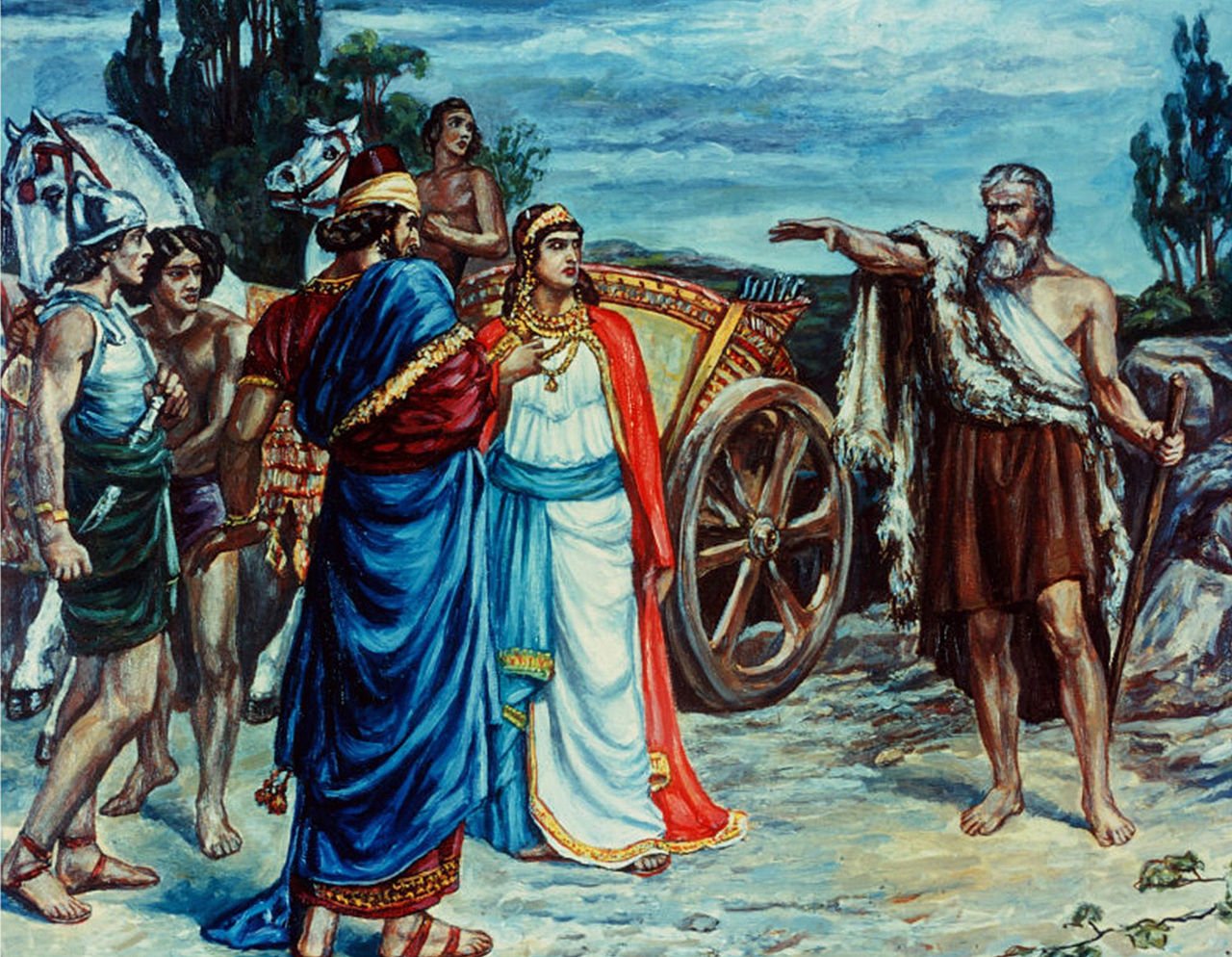 Jezebel and Ahab meeting Elijah, print by Sir Francis Dicksee (1853-1928). Piblic Domain
Jezebel and Ahab meeting Elijah, print by Sir Francis Dicksee (1853-1928). Piblic Domain
The spelling of the name was erroneous, and the personal seal could have belonged to another woman of the same name. There was uncertainty regarding the original owner.
A new and more thorough investigation by the Utrecht Old Testament scholar Marjo Korpel finally confirmed that the seal must have belonged to the infamous Queen Jezebel.
Comparing the artifact to other, similar seals revealed that the upper edge of the seal must have carried two broken-off letters that point to Jezebel as owner and lead to the correct spelling of Jezebel's name (in mirror image).
The Death Of The Evil Queen Jezebel
The death of Queen Jezebel was as dramatic as her life, characterized by intrigue, sex, cruelty, and murder.
Jezebel's marriage to King Ahab was not based on love. It was an arranged union to gain political powers bringing advantages to both nations. Together they ruled as King and queen of Israel, but Jezebel continued to worship Baal and, in doing so, earned many enemies. Jezebel used her influence over King Ahab to foster the spread of her Baal religion with its many gods, ritual sex, and temple prostitutes. She hated the monotheistic Hebrew religion
Under his wife's evil influence, King Ahab protected and encouraged pagan rituals, prompting Yahweh to inflict a three-year drought in a land where people disregarded him. Seizing the initiative, Jezebel imported 450 priests of Baal from her native Phoenicia and had many of Yahweh's prophets murdered.
The story of Naboth is perhaps the best-known story of Jezebel's life. Naboth was an ordinary landowner who lived close to the King's residence. One day he was asked to give his land to King Ahab in exchange for some compensation.
Jezabel and Ahab (c. 1863) by Frederic Leighton. Image credit: Frederic Leighton - Public Domain
Because of Jewish law, Naboth refused to give up his family's ancestral land. Incited by Naboth's refusal to King Ahab, Jezebel falsely charged him with treason and blaspheming "God and the king" and had him condemned to death by stoning. She then took his plot of land for the King. At this point, Elijah arrived and confronted King Ahab about this brutal transgression and then predicted that Ahab and all of his heirs would be killed and that dogs would eat Jezebel, according to the famous story.
Some years later, King Ahab died in a battle against the Syrians, and a man named Jehu was promised the crown if he killed Jezebel's son, thus taking Jezebel's power.
What happened next is still a mystery. Jehu headed to Jezebel's palace to murder her. Jezebel was expecting him. She had dressed in nice clothes and put on plenty of make-up. Why she did it, it is unknown. Some believe her dress was a preparation for her death. Others think it was an attempt to seduce Jehu and become his mistress. We may never know her intentions, but the whole event ended in that Jezebel was thrown out of her bedroom window, trampled by horses, and eaten by dogs.
Queen Jezebel has always been considered a controversial figure; in the centuries since her death, she's become even legendary. In Christian lore, a comparison to Jezebel suggested that a person was a pagan or an apostate masquerading as a servant of God. In particular, Christians associated Jezebel with immortality. In modern usage, Jezebel is sometimes used as a synonym for reckless and controlling women.
Eventually, Jezebel suffered a horrific death.
Written by – A. Sutherland - AncientPages.com Senior Staff Writer
Updated on August 26, 2022
Copyright © AncientPages.com All rights reserved. This material may not be published, broadcast, rewritten or redistributed in whole or part without the express written permission of AncientPages.com
Expand for referencesIvan Egnell & Anton Fridrichsen, Svenskt Bibliskt Uppslagsverk I-II
More From Ancient Pages
-
 Coyote: Hero, Trickster, Immortal And Respected Animal In Native American Myths
Featured Stories | May 10, 2016
Coyote: Hero, Trickster, Immortal And Respected Animal In Native American Myths
Featured Stories | May 10, 2016 -
 800-Year-Old Shipwreck Discovered Off Salento Coast, Italy
Archaeology | Dec 30, 2015
800-Year-Old Shipwreck Discovered Off Salento Coast, Italy
Archaeology | Dec 30, 2015 -
 Dionysus – Greek God Of Wine, Music, Ritual Madness And Ecstasy Was Born Twice
Featured Stories | Jan 8, 2019
Dionysus – Greek God Of Wine, Music, Ritual Madness And Ecstasy Was Born Twice
Featured Stories | Jan 8, 2019 -
 On This Day In History: Solar Storm Known As The Carrington Event Took Place – On August 28, 1859
News | Aug 28, 2016
On This Day In History: Solar Storm Known As The Carrington Event Took Place – On August 28, 1859
News | Aug 28, 2016 -
 Pregnant Woman’s Remains With An 8-Month Fetus Unearthed At Ancient Taosibei Cemetery, Shanxi, China
Archaeology | Jun 13, 2022
Pregnant Woman’s Remains With An 8-Month Fetus Unearthed At Ancient Taosibei Cemetery, Shanxi, China
Archaeology | Jun 13, 2022 -
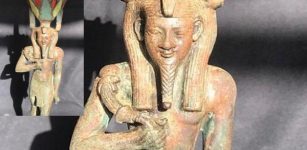 Carved Statue Of God Nefertum Unearthed In Egypt’s Saqqara Necropolis
Archaeology | Oct 3, 2020
Carved Statue Of God Nefertum Unearthed In Egypt’s Saqqara Necropolis
Archaeology | Oct 3, 2020 -
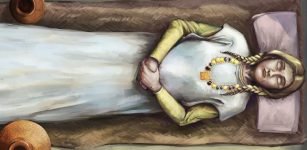 Spectacular Anglo-Saxon Burial Uncovered – Here’s What It Tells Us About Women In Seventh-Century England
Featured Stories | Dec 17, 2022
Spectacular Anglo-Saxon Burial Uncovered – Here’s What It Tells Us About Women In Seventh-Century England
Featured Stories | Dec 17, 2022 -
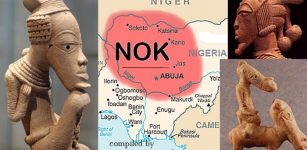 Enigmatic Nok Culture: A Sub-Saharan Archaeological Puzzle
Civilizations | Mar 7, 2020
Enigmatic Nok Culture: A Sub-Saharan Archaeological Puzzle
Civilizations | Mar 7, 2020 -
 Jiroft’s Konar Sandal – Home To A Huge Ziggurat And Many Ancient Treasures
Featured Stories | Jun 8, 2021
Jiroft’s Konar Sandal – Home To A Huge Ziggurat And Many Ancient Treasures
Featured Stories | Jun 8, 2021 -
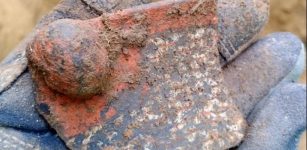 6,000-Year-Old Discovery Of Artifacts Associated With Ancient Lengyel Culture
Archaeology | Mar 27, 2020
6,000-Year-Old Discovery Of Artifacts Associated With Ancient Lengyel Culture
Archaeology | Mar 27, 2020 -
 Ancient DNA Unravels The Mystery Of Huge 6,500-Year-Old Cemetery And The Tomb Of A ‘Masculine Woman’ In Normandy, France
Archaeology | May 5, 2022
Ancient DNA Unravels The Mystery Of Huge 6,500-Year-Old Cemetery And The Tomb Of A ‘Masculine Woman’ In Normandy, France
Archaeology | May 5, 2022 -
 Ancient City Of Sogmatar And Recent Discovery Of 5,000-Year-Old Children’s Toy
Archaeology | Oct 6, 2017
Ancient City Of Sogmatar And Recent Discovery Of 5,000-Year-Old Children’s Toy
Archaeology | Oct 6, 2017 -
 The Curse Of Chief Chocorua Who Died On The Mountain That Bears His Name
Featured Stories | Mar 9, 2019
The Curse Of Chief Chocorua Who Died On The Mountain That Bears His Name
Featured Stories | Mar 9, 2019 -
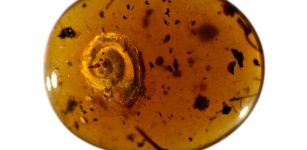 Hairy Snail Discovered In 99-Million-Year-Old Amber
Archaeology | Oct 29, 2022
Hairy Snail Discovered In 99-Million-Year-Old Amber
Archaeology | Oct 29, 2022 -
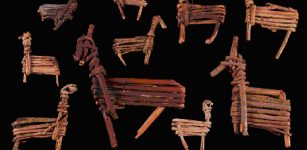 Tusayan Pueblo Ruins And Split Twig Figurines Tell Story Of People Who Once Inhabited The Grand Canyon
Civilizations | Nov 13, 2018
Tusayan Pueblo Ruins And Split Twig Figurines Tell Story Of People Who Once Inhabited The Grand Canyon
Civilizations | Nov 13, 2018 -
 Bizarre Ancient Capuchin Crypt ‘Decorated’ With The Bones Of 4,000 Monks
Ancient Traditions And Customs | Nov 22, 2018
Bizarre Ancient Capuchin Crypt ‘Decorated’ With The Bones Of 4,000 Monks
Ancient Traditions And Customs | Nov 22, 2018 -
 Unusual Secret May Be Hidden In A Mysterious Valley In The American Southwest
Featured Stories | Jan 30, 2024
Unusual Secret May Be Hidden In A Mysterious Valley In The American Southwest
Featured Stories | Jan 30, 2024 -
 Longvek – Ancient Historical City That Sheds Light On Cambodia’s ‘Dark Age’
Archaeology | Jan 13, 2016
Longvek – Ancient Historical City That Sheds Light On Cambodia’s ‘Dark Age’
Archaeology | Jan 13, 2016 -
 Neanderthal Hunting Camp Discovered In The Center Of The Iberian Peninsula
Archaeology | Aug 30, 2021
Neanderthal Hunting Camp Discovered In The Center Of The Iberian Peninsula
Archaeology | Aug 30, 2021 -
 Megalithic Cemetery With 49-50M Long Tombs Was Accidentally Found In Poland
Archaeology | Mar 10, 2021
Megalithic Cemetery With 49-50M Long Tombs Was Accidentally Found In Poland
Archaeology | Mar 10, 2021

